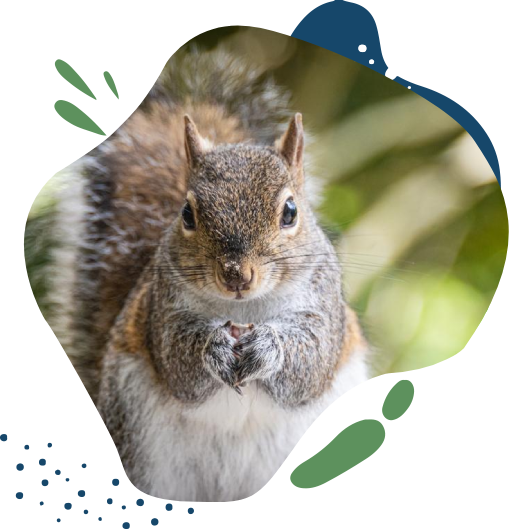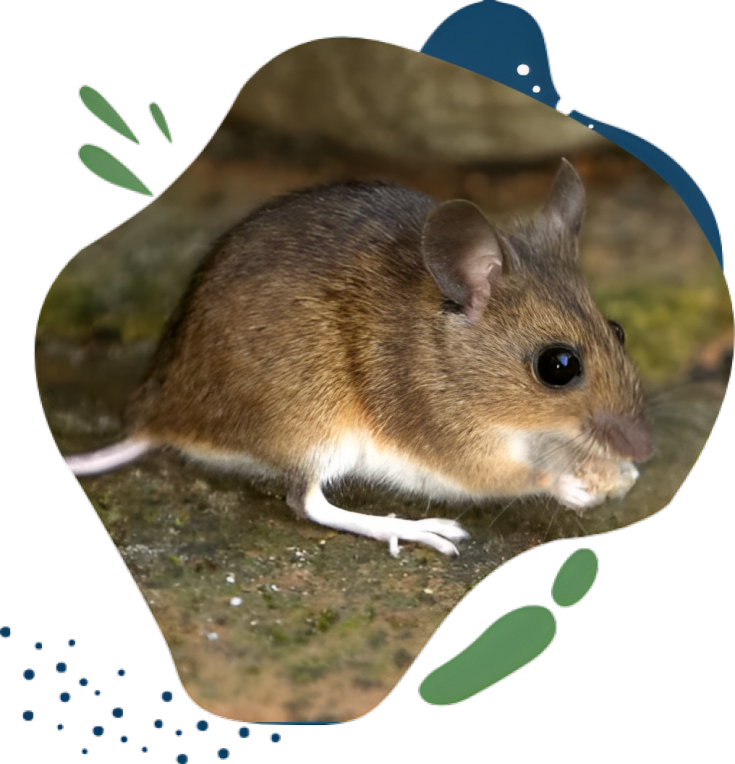Rodents
House Mice
(Mus musculus)
Recognition: Body of adult mouse roughly 3" in length with tail adding additional 3". Traditionally gray with white underside.
Bio: Will harbor in dark, undisturbed areas of a home or business. Generally nocturnal but not uncommon to see them during the day. They are opportunistic feeders but prefer seeds when they are presented.
Control:
Rodent control is obtained by taking steps to eliminate openings and entrances, followed by efforts by Abair Lavery to control the active problem within the structure. Control measure can be obtained with the use of rodenticides, tracking powders or trapping techniques. Our technicians are trained to evaluate each situation thoroughly and design a control program that will be successful.
Squirrels
Northern Flying Squirrel
(Glaucomys sabrinus)
Recognition: Generally Nocturnal, these squirrels are light brown on their upper body and grayish on the flanks and white underneath, with large eyes and a flat tail. Generally measure 25 to 37 cm long.
Habit: Prefer to nest in trees naturally, but will be a sporadic pest in uninhabited attics. Feeding on fungi, nuts, insects, bird eggs, buds and flowers, they will commonly cache their food when supplies are lower. Despite their name, they do not actually fly, rather, they will initiate a glide with a running start by bringing their limbs under their body and propelling themselves before extending their limbs, stretching their membrane and creating a sail-like form.
Control:
As with all pests, Abair Lavery will take the least hazardous approach possible. Trapping is the most successful form. Good preventative measures include inspecting for obvious entry. Once removed, it is suggested to place exclusions in place to discourage further entry.

Eastern Gray Squirrel
(Sciurus carolinensis)
Recognition: Predominantly Gray with hints of brown on the dorsal side, with a white underside. A large bushy tail extends the size to 42-52 cm, while weighing between 14-21 ounces.
Habits: A typical hoarder of it's food, Gray Squirrels will commonly build their nest in the forks of trees, made up of leaves and twigs. Like the flying squirrel, they also can make their way into an attic or exterior walls of a home. Their diet is wide ranging from berries, seeds, acorns, nuts, to tree bark and mushrooms. They have a high tolerance for humans, commonly raiding bird feeders and gardens.
Control:
As with all pests, Abair Lavery will take the least hazardous approach possible. Similar to the flying squirrel, trapping is the most successful form. Good preventative measures include inspecting for obvious entry. Once removed, it is suggested to place exclusions in place to discourage further entry.
Let Our Family,
Take Care of Your Family
Schedule service today to keep your peace of mind in tact.



